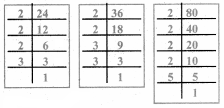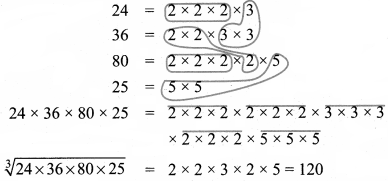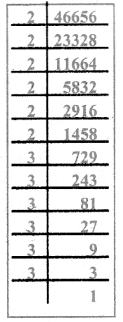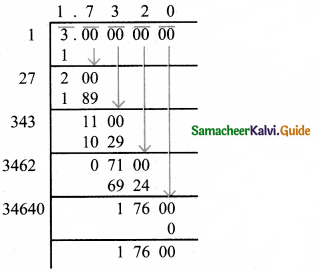Tamilnadu State Board New Syllabus Samacheer Kalvi 8th Maths Guide Pdf Chapter 1 Numbers Ex 1.5 Textbook Questions and Answers, Notes.
Tamilnadu Samacheer Kalvi 8th Maths Solutions Chapter 1 Numbers Ex 1.5
Question 1.
Fill in the blanks
(i) The ones digits in the cube of 73 is __________ .
Answer:
7
(ii) The maximum number of digits in the cube of a two digit number is __________ .
Answer:
6
![]()
(iii) The smallest number to be added to 3333 to make it a perfect cube is __________ .
Answer:
42
(iv) The cube root of 540×50 is __________ .
Answer:
30
(v) The cube root of 0.000004913 is __________ .
Answer:
0.017
Question 2.
Say True or False.
(i) The cube of 24 ends with the digit 4.
Answer:
True
(ii) Subtracting 103 from 1729 gives 93.
Answer:
True
![]()
(iii) The cube of 0.0012 is 0.000001728.
Answer:
False
(iv) 79570 is not a perfect cube.
Answer:
True
(v) The cube root of 250047 is 63.
Answer:
True
Question 3.
Show that 1944 is not a perfect cube.
Answer:

1944 = 2 × 2 × 2 × 3 × 3 × 3 × 3 × 3
![]()
= 23 × 33 × 3 × 3
There are two triplets to make further triplets we need one more 3.
∴ 1944 is not a perfect cube.
![]()
Question 4.
Find the smallest number by which 10985 should be divided so that the quotient is a perfect cube.
Answer:

We have 10985 = 5 × 13 ×13 × 13
= 5 × 13 ×13 × 13
Here we have a triplet of 13 and we are left over with 5.
If we divide 10985 by 5, the new number will be a perfect cube.
∴ The required number is 5.
Question 5.
Find the smallest number by which 200 should be multiplied to make it a perfect cube.
Answer:

![]()
Grouping the prime factors of 200 as triplets, we are left with 5 × 5
We need one more 5 to make it a perfect cube.
So to make 200 a perfect cube multiply both sides by 5.
![]()
1000 = 2 × 2 × 2 × 5 × 5 × 5 × 5 × 5
Now 1000 is a perfect cube.
∴ The required number is 5.
![]()
Question 6.
Find the cube root 24 × 36 × 80 × 25.
Answer:


Question 7.
Find the cube root of 729 and 6859 prime factorisation.
Answer:
(i)

![]()
= 3 × 3
\(\sqrt[3]{729}\) = 9

![]()
(ii) \(\sqrt[3]{6859}\) = \(\sqrt[3]{19 \times 19 \times 19}\)
\(\sqrt[3]{6859}\) = 19
Question 8.
What is the square root of cube root of 46656?
Answer:

We have to find out \(\sqrt{(\sqrt[3]{46656})}\)
First we will find \(\sqrt[3]{46656}\)

∴ The required number is 6.
![]()
Question 9.
If the cube of a squared number is 729, find the square root of that number.
Answer:
![]()
(729)1/3 = 3 × 3 = 9
∴ The cube of 9 is 729.
9 = 3 × 3 [ie 3 is squared to get 9]

We have to find out √3,
√3 = 1.732
![]()
Question 10.
Find two smallest perfect square numbers which when multiplied together gives a perfect cube number.
Answer:
Consider the numbers 22 and 42
The numbers are 4 and 16.
Their procluct 4 × 16 = 64
64 = 4 × 4 × 4
∴ The required square numbers are 4 and 16